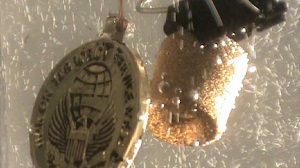Reducing Your Facility's Hazardous Waste
The New York State Department of Environmental Conservation sent this bulletin on 01/18/2018 08:30 AM EST |
| DEC Delivers - Information to keep you connected and informed from the NYS Department of Environmental Conservation |
| Share or view as a web page || Update preferences or unsubscribe |
Reducing Your Facility's Hazardous Waste |
|
This is the first in a series of six emails we'll be sending over the next couple of weeks providing tips you can incorporate into your everyday business practices to help bring down your costs and hazardous waste generation. One way to reduce your environmental impact would be to substitute less hazardous inputs. For example, metal finishing shops are switching from hexavalent chromium to less toxic formulations such as cobalt-phosphorous based coating and trivalent chromium. Learn about the development of less hazardous non-metal coatings, like graphene (opens as a PDF). Remember, not all of the replacement alternatives are considered less hazardous. If you need assistance in selecting your greener options, check out EPA’s Safer Chemical Ingredients List and this online tool to assist with finding greener surface solutions for many industrial applications.
Did You Know?Tiny bubbles and aqueous-based solutions can lift contaminants off part surfaces, even those with irregular shapes. Learn how the New York State Pollution Prevention Institute is working with precision parts manufacturers to implement a new technology – Vacuum Cycle Nucleation (opens as a PDF), a cleaning method that does not require toxics! Happy 10th!
Watch the video! Keep checking your inboxes for the next part in the series – Part 2: Product Re-Design |


 DEC is proud to announce that the New York State Pollution Prevention Institute is celebrating its 10th Anniversary. That’s 10 years of delivering quality technical services to our state’s businesses and organizations to reduce natural resource consumption, lower costs, and eliminate wastes.
DEC is proud to announce that the New York State Pollution Prevention Institute is celebrating its 10th Anniversary. That’s 10 years of delivering quality technical services to our state’s businesses and organizations to reduce natural resource consumption, lower costs, and eliminate wastes.